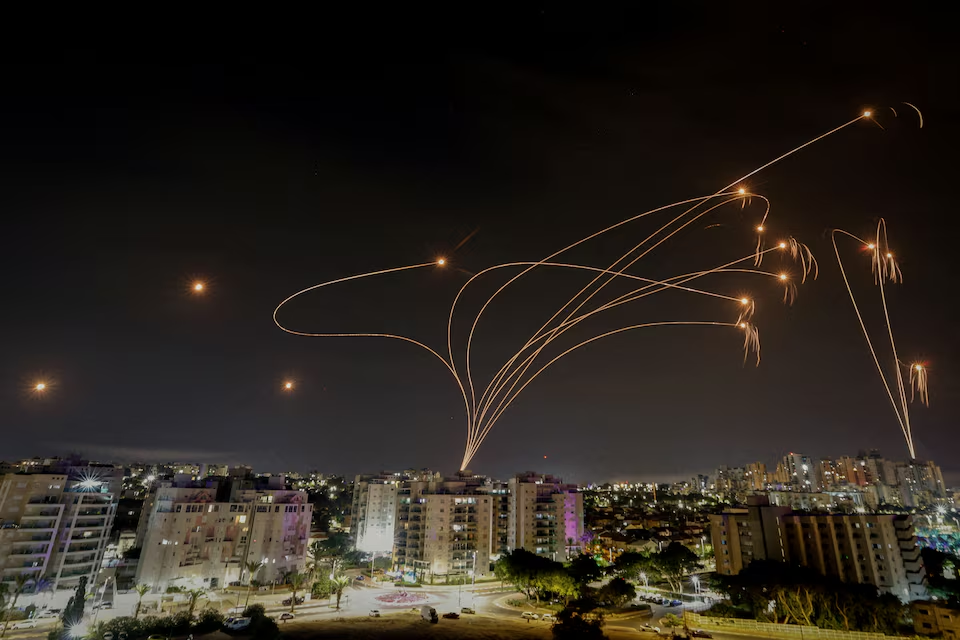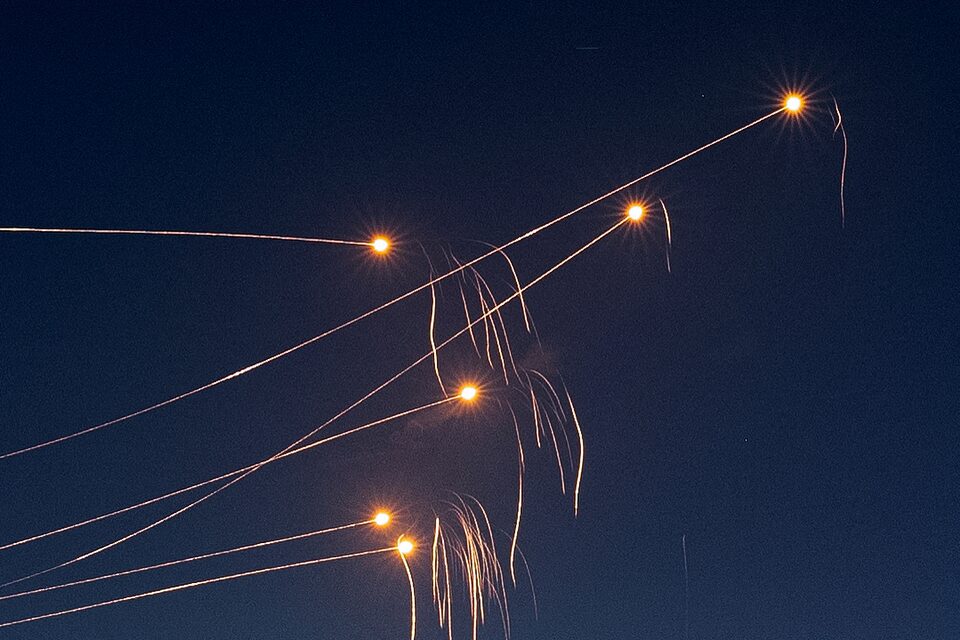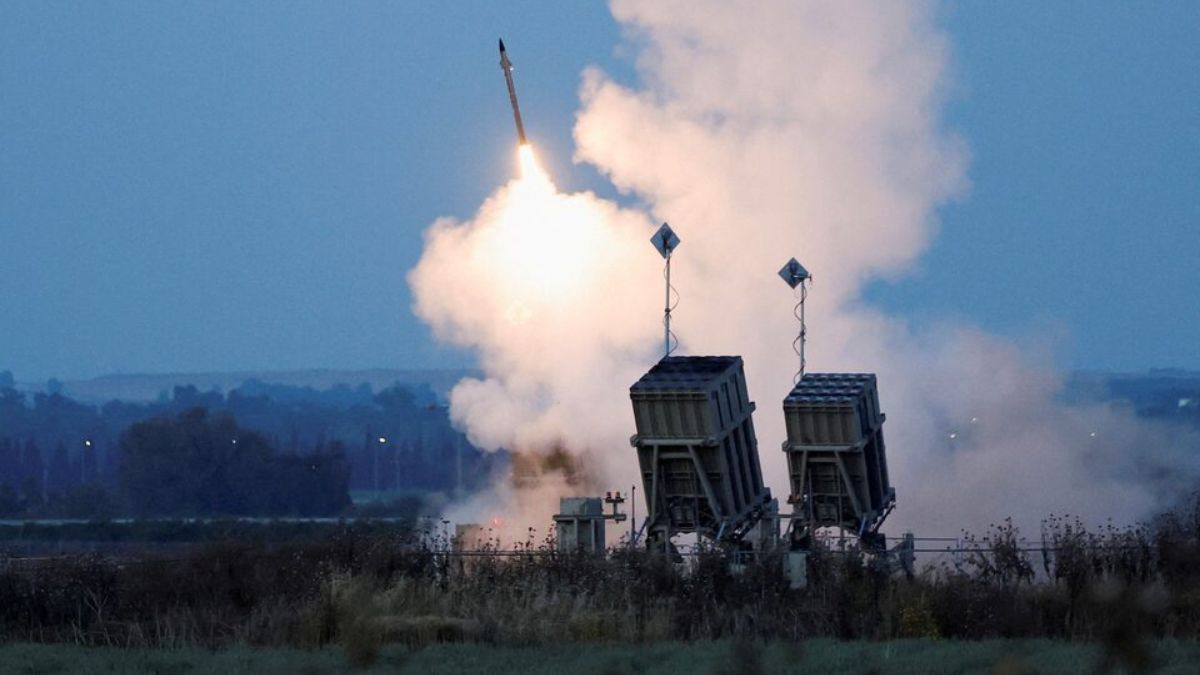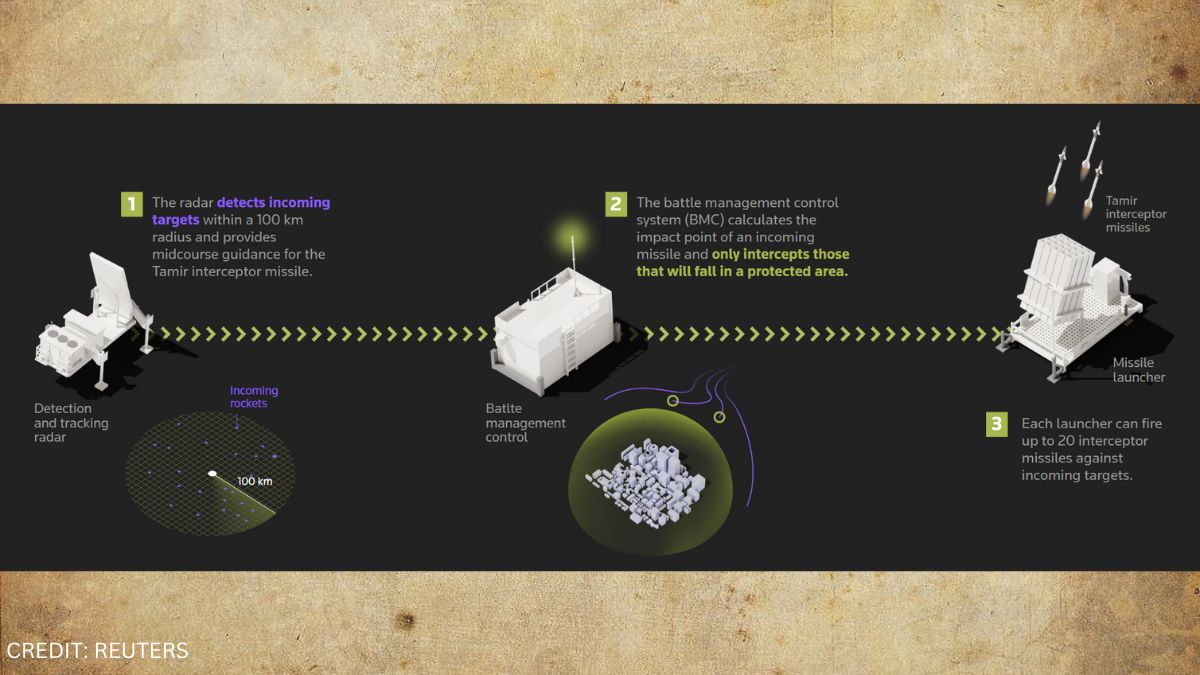- By Ajeet Kumar
- Sat, 14 Jun 2025 02:15 AM (IST)
- Source:JND
Iron dome: Irael has multi-layered air defences against attacks by regional adversaries such as Iran, where residential sites were hit by Iranian strikes on Friday (local time) in the latest exchange in the escalating conflict between the Middle East rivals. Israel said it was retaliating for Tehran's missile attack. Israel has been honing its air defences since coming under Iraqi Scud salvoes in the 1991 Gulf war, in addition to receiving support from the US which said in October last year it had sent an advanced anti-missile system to Israel to support those defences.
The outer layers are the Arrow-2 and Arrow-3 systems, designed to intercept ballistic missiles fired from thousands of kilometres away. The Arrow-2 is optimised for destroying missiles in the atmosphere, while the Arrow-3 can hit them while they are coasting in space. Both are meant to minimise the chance that warheads or payloads from the destroyed targets cause harm on the ground.

(Iron dome intercepts Iranian missiles | REUTERS)
Here are details of Israel's missile defences:
Arrow
The long-range Arrow-2 and Arrow-3 interceptors, developed by Israel with an Iranian missile threat in mind, are designed to engage threats both in and outside the atmosphere, respectively. They operate at an altitude that allows for the safe dispersal of any non-conventional warheads. State-owned Israel Aerospace Industries is the project's main contractor, while Boeing is involved in producing the interceptors.
On October 31, 2023, Israel's military said it had used the Arrow aerial defence system for the first time since the outbreak three weeks before the war with Hamas to intercept a surface-to-surface missile fired from the area of the Red Sea towards its territory. In September 2023, Germany signed a letter of commitment with Israel to buy the Arrow-3 system for nearly 4 billion euros ($4.2 billion).

(Iron dome intercepts Iranian missiles | REUTERS)
David's Sling
The mid-range David's Sling system is designed to shoot down ballistic missiles fired from 100 km to 200 km away. Developed and manufactured jointly by Israel's state-owned Rafael Advanced Defense Systems and the US, formerly known as Raytheon, David's Sling is also designed to intercept aircraft, drones and cruise missiles.
What is Iron Dome?
Iron Dome was built to intercept the kind of low-tech rockets fired by the Palestinian Islamist movement Hamas in Gaza. Developed by state-owned Rafael Advanced Defense Systems with US backing, it became operational in 2011. Each truck-towed unit can direct radar-guided missiles against short-range threats such as rockets, mortars and drones. A key part of Iron Dome is its control system’s ability to discern what incoming targets pose a threat. If an adversary’s rocket will land harmlessly - in an unpopulated area or in the sea, for instance - it will not be intercepted. When Hamas began its attack on Israel in October 2023, it fired several thousand rockets into Israel, with a reported interception rate of about 90 per cent. Rafael says that over the course of its service, Iron Dome has intercepted thousands of targets.

How does Iron Dome works
Iron Dome was originally billed as providing city-sized coverage against rockets with ranges of 4 to 70 km, but experts say this has been expanded as the system has been improved over time. The systems work to create a protective space above Israeli towns and settlements. Any incoming projectile determined to be a threat can be targeted.
Process
Detection
- When a rocket is launched toward Israel, radar systems detect it immediately.
Decision
- A computer quickly checks where the rocket is going.
- If it's heading toward an empty field or the sea, Iron Dome ignores it.
- If it's heading toward people, homes, or important places, it gets ready to stop it.
Interception
- Iron Dome fires a special missile (called Tamir) to hit the incoming rocket in the air — before it can reach its target.
Explosion in the Sky
- The Tamir missile destroys the rocket mid-air, creating a safe explosion high above the ground to avoid damage or injuries.

What is the cost of iron dome?
The mission of shooting down numerous cheap, low-end threats means Iron Dome’s interceptors must also be inexpensive. Each Tamir missile costs about $50,000, said Dr Yehoshua Kalisky, a senior researcher at the Institute for National Security Studies in Tel Aviv, which is low relative to a multimillion-dollar Patriot missile. The price of not stopping an incoming threat must also be factored in, said Ankit Panda of the US-based Carnegie Endowment for International Peace.
The high rate of fire, especially during a full-blown conflict, puts a strain on the ammunition supply of any air defence system, Kalisky said. That is why saturation attacks are an attractive tactic, and why countries must stockpile air defence missiles, he added. “It’s a problem with any type of ammunition,” he said. “You have to prepare in advance. You have to prepare for that kind of attack.”
Israel does not publicise the number of Tamir interceptors it produces or stockpiles. It also does not disclose the number of missiles fired by its air defence systems, although Kalisky said Iron Dome is designed to fire two missiles at each target.
The layers of defences and the use of systems tailor-made for Israel’s specific situation make Iron Dome especially potent, Panda said. “Israel I think has the most effective missile defence solution for the threats it faces as a country,” he said. “It’s been pretty well established that Iron Dome has a concept of operation that is incredibly effective.”
(With inputs from Reuters)

